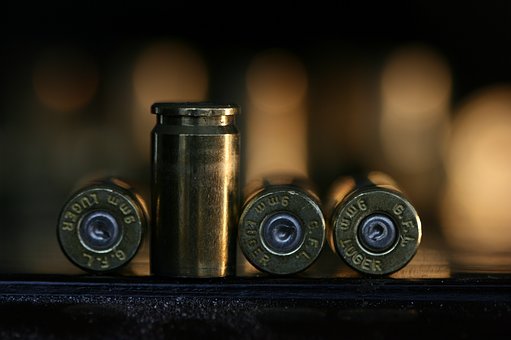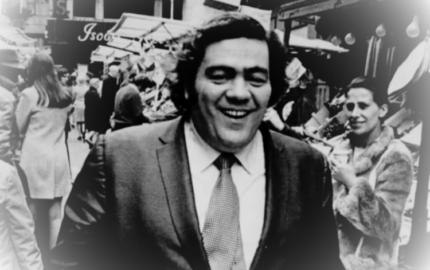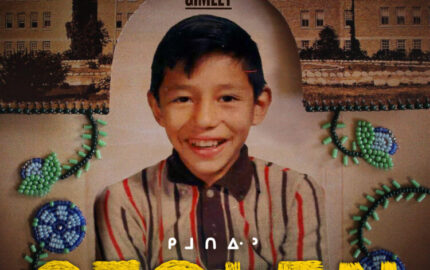There are known news conventions: something happens and someone writes about it and somebody publishes it and then maybe people talk about it. There are known narrative conventions: a relatable protagonist confronts a complication and, through time and rising tension, reaches resolution.
And then there is "Guns: An American Conversation,” which defies all of those conventions to tell a story that is, in terms of news and narrative, not much of a story at all.
Some quick backstory to that non-story: There had been yet one more horrific school shooting – this one in Parkland, Florida. That was followed by yet more protests and yet more political proclamations and yet no more resolution. In that static wake, publishers from Advance Local, which owns news outlets in nine states, invited people to talk about guns and gun culture, through a broad invitation via social media and in a smaller in-person group over a weekend in Washington, D.C. Advance worked in concert with SpaceshipMedia, which hosts and guides conversations with the goal of using “journalism to bridge divides.”
What does it really feel like to have a gun pressed to your temple, or to live alone at the end of a long, rural road?
~ Kelley Benham French
The resulting project was, according to its introduction, “… an audacious experiment in a new kind of journalism and a new kind of public discourse.” That claim risks ignoring the civic or public journalism movement of the 1990s, when newspapers sought to engage more directly with citizens by hosting discussions on matters of shared public interest.
But if the core event behind the gun conversation wasn’t groundbreaking, the approach to reporting it may have been: Advance contracted with three of the top narrative journalists in the country – Kelley Benham French, Tom French and Ben Montgomery – and assigned them to do what they do: report and write a compelling story, rich with character, detail and tension, and structured around a beginning, middle and end. Here’s how, in the intro, they framed the personal intimacy of a national political story:
A gun, by its nature, is a polarizing thing. A gun forces us to envision ourselves on either one end of it or the other. A gun is an equalizer, a tool, a symbol of liberty and power and slaughter and loss.
Some of the 21 gathered here saw a gun as an instrument of protection. One kept an AR-15 atop the armoire. A few kept guns strapped to their bodies, under their clothes.
Others had been threatened with guns. They feared that guns empowered people who would marginalize or silence them. They had been intimidated, mugged, raped. They'd lost mothers and cousins and uncles and friends.
No spoiler alert here, because there is no resolution to this, one of society's most troubling complications. It's just a story about an extended and intense conversation. So how do three writers (described by Kelley French as “nut-graph girl,” “structure guy” and “drop-everything-for-adventure guy”) plus one editor (“who can make lint sound fun”) turn that conversation into a riveting 5,000-word narrative? We asked, and they answered. The Q&As are edited lightly for length and clarity, and offered one by one.
The conversation itself was a matter of life and death. … How are we going to stanch this ocean of bloodshed?
~ Tom French
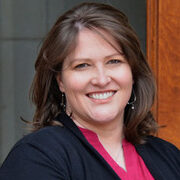
KELLEY BENHAM FRENCH, lead writer and “nut-graph girl,” was a reporter and editor for the St. Petersburg (now Tampa Bay) Times before joining the faculty of Indian University. She was a 2013 Pulitzer Prize finalist for “Never Let Go,” a three-part serial narrative about the birth of her premature daughter. She and her husband, Tom French, later co-wrote the book “Juniper: The Girl Who Was Born Too Soon.” (@KelleyBFrench)
STORYBOARD: What was the context (a phone call, a coffee date, an email?) of the invitation to write this story and what was your initial reaction?
Kelley French: Mark Katches (then the editor of The Oregonian) called and said he knew I probably didn’t have time to do this, but he hoped I did. When he described the story — some people talking in a room about guns — I thought, well, that’s not going to be any good. But Mark can make lint sound fun if he’s excited about it, and he had worked up some excitement for this. It was a story at the center of our most urgent national conversation. Advance had been doing groundbreaking work with these facilitated conversations, but without a cohesive narrative to tell the story of the story, who was noticing?
I’m a gun owner and a former high school teacher and a mom, so I really did feel like I could fairly represent all sides. I knew the traps of reporting on guns — how inflammatory the wrong language can be, and how important it was to be careful with the details. I was insanely busy with other projects, but Mark said I could hire help.
The day before the first weekend of major reporting I had some crazy stuff go down in my personal life and had to bail. Mark was calm. He always puts family first. He asked if I had a backup plan. I called Ben Montgomery, who was on a plane in less than 12 hours. So Mark had to convince a bunch of other editors that Ben was going to be great, and then he called me and said, 'This guy had better be good because I just put my reputation on the line for him and I’ve never f**king met him.'
Ben, Tom and I are quite literally family. Tom is my husband and Ben is the ex-husband of the woman who donated an egg to make my daughter. We’ve worked together so closely for so long that we can actually finish each other’s sentences. I can mimic either of their writing voices. We were all really busy, but between the three of us we probably added up to one whole reporter.
How did you write such a cogent interesting piece? Describe the meeting where the three of you strategized a plan for how best to report this story.
We didn’t meet until mid-way through the reporting, when Ben came to Bloomington on a previously-scheduled trip to talk to my reporting classes (at the University of Indiana). Ben and I worked together by phone while Tom finished his semester at IU. Our job initially was just to monitor the conversation on Facebook, which was sprawling and churning and alternately fascinating and super boring. The rest of the team at Advance was unbelievable about keeping track of the conversation, feeding facts into it, working with the participants to keep it productive, and reporting every day about what had taken place, what deserved follow-up, and what hinted of change or anything that might lend itself to a larger narrative. They did so much of the scouting work for us as we looked for characters.
I’m a gun owner and a former high school teacher and a mom, so I really did feel like I could fairly represent all sides.
~ Kelley Benham French
We had to choose characters very, very early in the process, before we really knew who would learn or grow or change or interact. And we had 150 or so people from which to choose. We were going for diversity of all kinds — geography, politics, gender, age. And of course each of the publications that belong to the Advance umbrella would appreciate having a character from their readership, though no one pushed us about whom to include.
Ben put the likely candidates on a Google map, and we started calling people. The first person I called was Alexis Intilli, and right away, as she breathlessly and profanely described how this project had changed her life, I thought, wow, maybe this experiment is working. Maybe this is a narrative after all.
Tom jumped in after about a month and sketched an outline, looking for ways that one character might tie to another. Ben was off and reporting early, taking a big swath of the Deep South. He got all the fun gigs – a ride-along with a cop, shooting with a gun enthusiast. Tom and I would grumble about this later. Tom had to tag along on a trip to the orthodontist, and I pretty much reported by phone.
Was it messy?
Not alarmingly so. No one cried. At one point I fell a few days behind and Mark told me I needed to pull it together, and I appreciated so much how he conveyed both the urgency and importance of the situation and his total confidence in me to not screw it up.
Why three writers?
Simply because none of us had time to do it alone. Mark gave me free rein – I could have hired 12 writers. I looked at a map and thought about where I had friends who could report and whether any of those reporters were within shouting distance of a good character, but in the end it ended up being the three of us.
So how about this graph? If I had to guess, it’s Tom:
"A gun by it’s nature is a polarizing thing. A gun forces us to envision ourselves on either one end of it or other. A gun is an equalizer, a tool, a symbol of liberty and power and slaughter and loss."
Hell, no. That was me. Tom is structure guy. I’m nut-graph girl. Ben is go-have-an-adventure-on-company-dime guy. I also did all cleanup/polish at the end, while Ben disappeared to hike the Appalachian Trail.
What was harder than you expected and what was easier?
This magnified the classic narrative problem of intimacy vs. breadth. Because for each character – and each reader – the issue was absolutely personal, and you have to lay some background and do some digging to represent that in a way that people on the other end of the political spectrum will see it. What does it really feel like to have a gun pressed to your temple, or to live alone at the end of a long, rural road? Guns tie into our identity, our sense of self and of liberty and of power and of control. We needed deeply intimate reporting, expansive nut sections, and smart, efficient structure and synthesis. And we also had to explain the project and how it came together. The word count (3,000 words) felt really tight from the start.
What was easy was how the three of us handed off the pieces. We all trust each other so much that it felt like this high-wire act where you can’t always see the other person but you know when you reach your arms out you’re going to lock wrists and no one is going to crash.
As a seasoned journalist trying something new, what was your takeaway?
I learned so much about interviewing from the story partners and just being there for these exercises in active listening. At the end, I was in awe of this process as a tool for change and a tool for journalism. It forced me to consider not just how we do this work but why we do it, what it’s for.
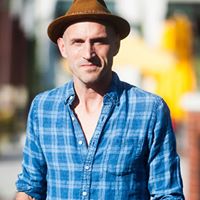
BEN MONTGOMERY, primary field reporter and “adventure guy,” is the author of three books, including “Grandma Gatewood’s Walk,” which won the 2014 National Outdoor Book Award for History/Biography. As a reporter at the Tampa Bay Times, he was on a team that was a 2010 Pulitzer Prize finalist in local reporting for exposing decades of abuse at a Florida reform school. He is founder of the narrative journalism website Gangrey. (@gangrey)
Storyboard: What was the context of the invitation to write this story and what was your initial reaction?
Ben Montgomery: I didn't fully understand the pitch at first. My friend Kelley Benham French, who had worked with Mark Katches before, tried to describe by phone what it was they were trying to do, and that they wanted to hire independent journalists to tell the story, but she and I both were pretty confused about the whole thing early on. Because Kelley had a family emergency, I was thrown into the mix a day or two before the gathering in D.C. I booked airplane tickets with no real understanding of what it was I was going to cover. I spoke by phone with (Advance VP) Michelle Holmes in Alabama the night before the event and, honestly, was still pretty confused about the mission. I remember asking: 'What's the goal here? What do you all hope to get out of this?' And Michelle was essentially like, 'There is no goal. We want people to talk.'
I remain unsure of the usefulness of this type of experiment, but I have great respect for the ambition behind it.
~ Ben Montgomery
I told Kelley it's going to be incredibly difficult to write a narrative – and that's the word they were using – about people having a conversation. I went to D.C. to basically try to select a handful of people who seemed interesting to me. Then we wanted to visit those folks in their hometowns and write about how their lives and experiences influenced their feelings about guns, and whether the conversations had changed their beliefs. To me, that amounted to more of a psychological narrative – following a handful of people with strong opinions through the process of psychological or ideological change. Tall order!
Describe the meeting where the three of your strategized a plan for how to report this story.
I came back from D.C. with mini-profiles. They were just simple character sketches, like: young black man, thinks gun control is racist, armed to protect himself from white supremacists ... that sort of thing. I had those for everyone involved. We began selecting the participants we thought were most interesting, articulate and honest about their feelings, and those we could reasonably go visit (i.e., did they live within a few hours of a major airport, etc). When we felt comfortable with our selected group, we set up time with each of them, to see life like they see it, to accumulate scenes and to get the texture and detail to help make their stories interesting.
When that reporting was finished, and our deadline was coming, we all got in the same Google doc and mapped out our scenes in the style of a thorough outline (or an annotated table of contents, for those familiar with book proposals). Kelley and Tom played with the structure of the scenes, so the story had a rhythm and the right complications at the right moments.
Was it messy?
Not for me. As confused as we were going in, we all gelled on the back end. I wrote my scenes and a sketch of the opening meeting in D.C. Kelley and Tom did the hard work of crafting transitions and arranging sections.
What was harder than you expected and what was easier?
There were a hundred moving pieces in this thing. We had to pay attention to the fast-paced Facebook conversations and track our characters’ arcs, and we didn't want to miss anything. We were getting daily updates from Advance folks on every little bend and turn, every news story that local reporters were writing, every controversy in the groups. Keeping up with all that wasn't super easy.
But what I feared early on – making a narrative out of something that by design was sort of physically stagnate – that part was easier that I thought. That's likely because of Kelley's genius in editing.
What was your personal takeaway from trying this?
I remain unsure of the usefulness of this type of experiment, but I have great respect for the ambition behind it. I was, at times, in awe of that ambition.
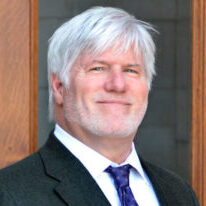
THOMAS FRENCH, the “structure guy” who outlined the narrative thread, holds the Riley Endowed Chair at his alma mater, Indiana University. In 1998, he was awarded the Pulitzer Prize for “Angels and Demons,” a series about the murder of a woman and her two teenage daughters that he reported for the St. Petersburg Times. Two of his other newspaper projects were turned into books, and he co-authored “Juniper: The Girl Who Was Born Too Soon,” with his wife Kelley Benham French.
Storyboard: How did you build the emotional though-line of this story?
Tom French: Kelley and Mark were the brains behind the story, and Ben reported and wrote with his usual vivid detail and energy. I tried to pitch in as best I could.
Kelley did ask me to work on the structure, and it was an interesting challenge, sequencing all those people’s stories and the back-and-forth of their conversation and the juxtaposing of their perspectives and the way those experiences collided and wove together, all of it unfolding as our country tried to come to terms with Parkland and so many other tragic gun deaths.
That’s a heckuva burden to place on one little outline.
The depth of heartbreaking feeling that our country brings to this tangled question of guns flowed like a river through the conversation that we were chronicling.
~ Tom French
So I tried to keep it simple and find a structure that got out of the way as much as possible. I asked myself what were the elements that the story absolutely had to contain for it to make sense, and then built the thing based on those essentials. Once you assign a section to each of those essentials, you can start moving those chunks around and looking for the most organic sequence. In the past I have used sugar packets to imagine an order for sections, and in the classroom I’ve used different colored markers, and in conferences with my students I will use virtually anything on my desk – a stapler, a tape dispenser, a phone charger, whatever’s at hand. In this case I didn’t use those types of physical objects because I was trying to construct a map that could be seen and evaluated by Mark (Katches) and Kelley and many other smart people from around the country. So I just started trying out combos of basic section outlines in Google docs, then got feedback and shifted accordingly.
The emotional through-line was crucial and fairly clear: The depth of heartbreaking feeling that our country brings to this tangled question of guns flowed like a river through the conversation that we were chronicling. And it flowed through the lives and experiences of the participants. So my goal was to let that river run straight through the story, paying attention to the currents and crosscurrents, trying to make room for both the personal memories the participants were carrying as well as some revealing moments in their extended conversation together.
The question driving the story – it was important for us to keep this in mind – was not what is the solution to gun violence but can people from radically different perspectives have a civil conversation that might conceivably lead this country toward common ground. That’s why the connection between Jennifer Brush and La'Daniel Boykin jumped out at me. Both were passionate and articulate about their opposing views, and both carried searing experiences that formed those views. I doubt they’re ever going to agree with each other, but they respected each other, and they listened to each other, and when they talked about Jennifer’s teenage son, it felt to me like something new opened up between them. That new space, to me, was the promised land that this whole experiment was searching for.
You excel at creating suspense, building cliffs for readers to dangle off. But how do you employ human curiosity as a structural tool so readers follow something so nebulous as the emotional arc of a conversation rather than plot points based on what happens to a protagonist?
I am drawn to suspense and I feel confident at identifying it in almost any kind of story I tackle, whether it’s a murder case or a story about a 13-year-old boy hoping for his first kiss. But this project was different, and I didn’t see a way to rely on that traditional kind of plot-driven suspense. Mark and Kelley’s belief – and I think all of us on the team felt this way – was that the conversation itself was a matter of life and death.
We needed to zoom in on little details that grounded the massive themes of the story.
~ Tom French
A common piece of structural advice, in journalism and other forms of storytelling, is that you need to raise the stakes, to make it clear to the audience what matters and how much can be gained or lost. There are hardly any stakes higher than those roiling inside our national conversation on gun violence. The future of our country is on the line. So many people’s lives are on the line. Our children’s future is on the line. My children’s future. Your children’s. The suspense, in other words, was built in.
We needed a structure that allowed our readers to see how those stakes are unfolding in the lives of our subjects. We needed to zoom in on little details that grounded the massive themes of the story. Like Jennifer and her son at the orthodontist, seizing a quiet moment when the tech walks away to talk about the violence in video games. That’s about as far from Hollywood-style action as you can get. But that tiny unglamorous moment was alive with Jennifer’s yearning for peace and her well-founded fears for her son, with all the huge questions that drove this whole project. How are we going to stanch this ocean of bloodshed? Is there room inside the American idea to do that while respecting the freedoms guaranteed in the Bill of Rights? Can we create those possibilities together? Can we even hear one another?

MARK KATCHES was the “can make lint fun” editor of The Oregonian and OregonLive.com when he oversaw “Guns: An American Conversation.” He previously ran the non-profit Center for Investigative Reporting, and now is executive editor of The Tampa Bay Times. (@MarkKatches)
Storyboard: What it was like to edit this story?
Mark Katches: The editing was the easy part. Thankfully, we had enlisted an incredible team of narrative writers in Kelley Benham French, Tom French and Ben Montgomery. When it comes down to it, this story was about a process: the process of bringing people together for a conversation and then the process of conducting the group chats. And much of it happened via Facebook at all hours of the day involving people posting in their pajamas at home or during their lunch breaks.
Although the topic was timely and the project unique, the ingredients made this really challenging from a storytelling standpoint. We basically assigned Kelley, Ben and Tom to write about a bunch of strangers posting on Facebook. Nothing terribly dramatic actually ended up happening. We saw some heated exchanges along the way and a couple of people got kicked out for bad behavior. But there wasn't any big resolution or climactic ending.
So the great challenge fell to Kelley, Tom and Ben to identify a handful of compelling characters through which they could tell this story about people talking about guns in America. And I think they absolutely nailed that. The backstories of the characters they selected made all the difference.
How much direction did you give Kelley French about what you wanted her to produce?
The credit for conceiving the idea of a group conversation belongs to Michelle Holmes, who was at the time the vice president of content at the Alabama News Group. This was her baby. She wanted to bring people from diverse backgrounds around the country to the table after Parkland. Get people in a room and then expand the group for a month-long moderated conversation on Facebook. The goal wasn't to solve all of our issues but to see if people could learn to listen or talk in a civil manner.
I got involved when we decided that we should chronicle the experience. John Hassell, who is the vice president of content for all of Advance Local, was the first to suggest that we capture this somehow with our own story. John asked me if I could enlist Kelley, who I had worked with on a big project about a captive-born polar bear.
The goal wasn’t to solve all of our issues but to see if people could learn to listen or talk in a civil manner.
~ Mark Katches
We kept it simple. We approached this in a less-is-more sort of way. About 150 people from around the country participated in the group discussion. We wanted to find just a few compelling characters who had volunteered to be part of the conversation and we wanted to tell this story through their eyes as they experienced it, while also weaving in their backstories and their personal experiences with firearms. We originally talked about a 3,000-word story. But Kelley, Ben and Tom had gathered so much great stuff. It was not a hard decision to give them more space (5,000-plus words) and to build this into a special section that we published in every Advance market.
